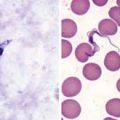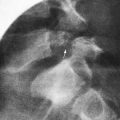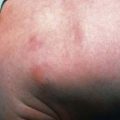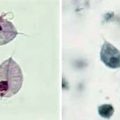Chapter 345 Pancreatic Tumors
Pancreatic tumors can be of either endocrine or nonendocrine origin. Tumors of endocrine origin include insulinomas and gastrinomas. These and other functioning tumors occur in the autosomal dominantly inherited multiple endocrine neoplasia type 1 (MEN-1). Hypoglycemia accompanied by higher than expected insulin levels or refractory gastric ulcers (Zollinger-Ellison syndrome) indicate the possibility of a pancreatic tumor (Chapter 337). Most gastrinomas arise outside of the pancreas. The treatment of choice is surgical removal. If the primary tumor cannot be found or if it has metastasized, cure might not be possible. Treatment with high dose of a proton pump inhibitor to inhibit gastric acid secretion is then indicated.
The watery diarrhea-hypokalemia-acidosis syndrome is usually produced by the secretion of vasoactive intestinal peptide (VIP) by a non–α-cell tumor (VIPoma) (see Table 333-7). VIP levels are often, but not always, increased in the serum. Treatment is surgical removal of the tumor. When this is not possible, symptoms may be controlled by the use of octreotide acetate (cyclic somatostatin, Sandostatin), a synthetic analog of somatostatin. Pancreatic tumors secreting a variety of hormones, including glucagon, somatostatin, and pancreatic polypeptide have also been described. The treatment is surgical resection when possible.
Insulinomas and persistent hyperinsulinemic hypoglycemia of infancy produce symptomatic hypoglycemia most commonly caused by mutations in the ABCC8 gene. Massive subtotal or total pancreatectomy is the treatment of choice when medical treatment fails (Chapter 86). These children might then develop pancreatic insufficiency and diabetes as a complication of surgery.
Chung EM, Travis MD, Conran RM. Pancreatic tumors in children: radiologic-pathologic correlation. RadioGraphics. 2006;26:1211-1238.
Dekelbab B, Sperling M. Recent advances in hyperinsulinemic hypoglycemia of infancy. Acta Paediatr. 2006;95:1157-1164.
Geetika K, O’Dorisio S, Menda Y, et al. Gastroenteropancreatic neuroendocrine tumors in children and young adults. Pediatr Radiol. 2008;38:251-259.






